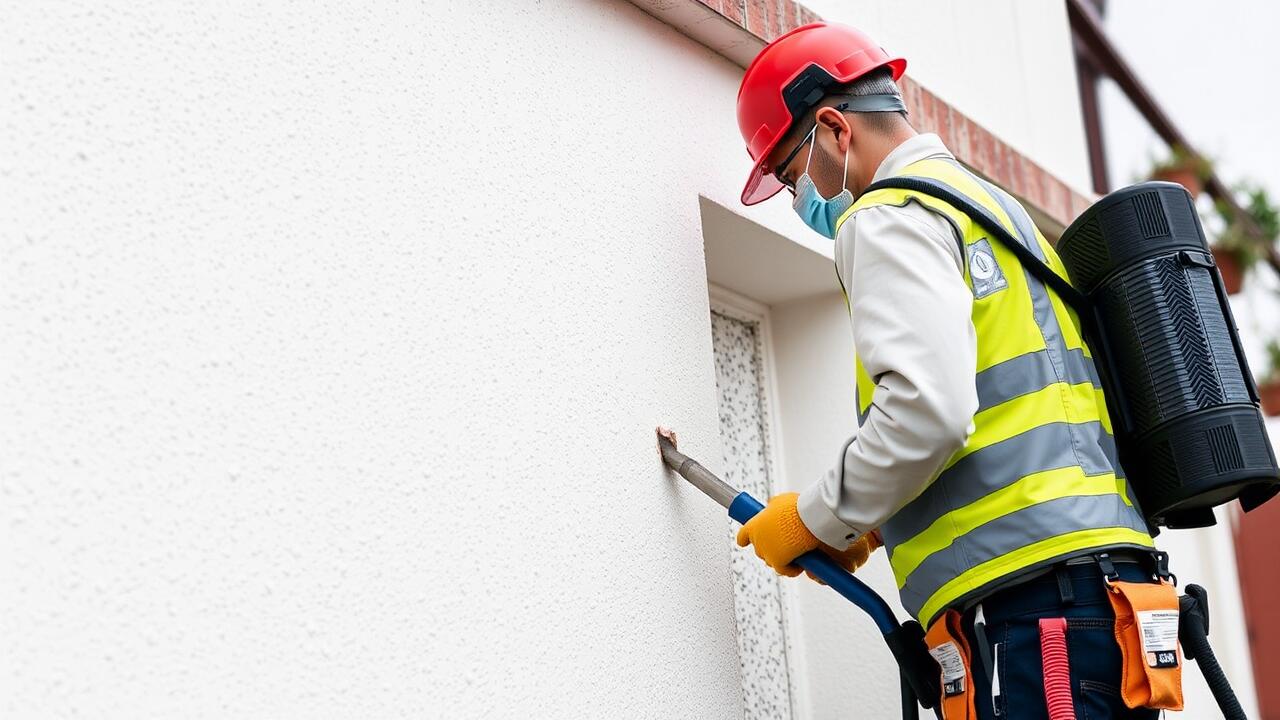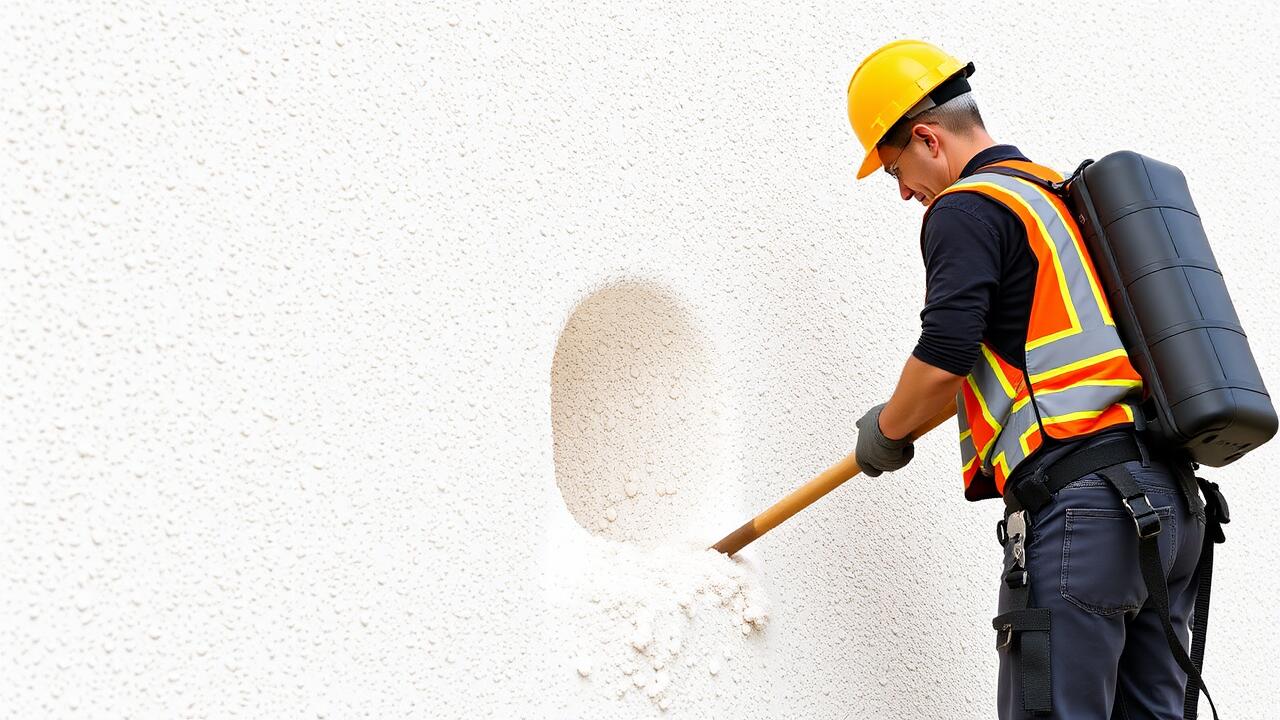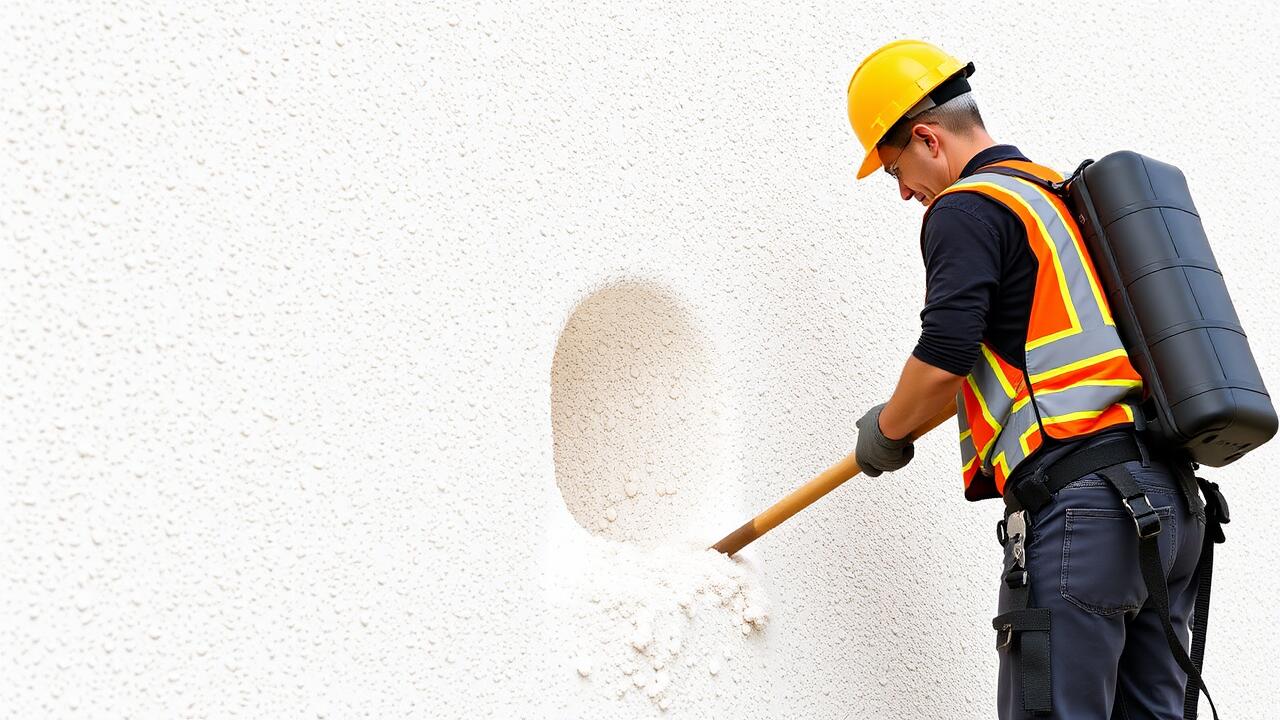
Handling Hazardous Materials
When dealing with stucco removal, handling hazardous materials is crucial for ensuring safety on the job site. Many stucco products may contain harmful substances such as asbestos or lead paint, particularly in older constructions. Before beginning any removal process, it's essential to conduct a thorough inspection of the materials involved. Proper testing and identification of these hazardous components are necessary to mitigate the risk of exposure. Dispose of any hazardous materials according to local regulations to avoid environmental contamination.
In the Chatsworth, Los Angeles Stucco Removal process, workers should utilize appropriate personal protective equipment (PPE) such as masks, goggles, and gloves to guard against dust and chemical exposure. Adequate ventilation is also vital when removing stucco to minimize inhalation risks. Ensuring a clean work environment can further reduce hazards. Regular training sessions on handling hazardous materials can equip workers with the knowledge needed to recognize potential dangers and employ proper safety protocols.
Identifying and Managing Risks
Identifying potential hazards is crucial when planning any stucco removal project. Work sites can present various risks, including exposure to hazardous materials such as asbestos or lead-based paint, especially in older buildings. Before beginning the process, it's important to assess the condition of the stucco and any underlying structures. Conducting a thorough inspection and, if necessary, seeking assistance from professionals helps ensure that any harmful materials are properly identified and addressed. In areas like Chatsworth, Los Angeles, stucco removal often involves older homes, making this step even more vital to maintaining safety.
Once risks have been identified, managing those hazards effectively is essential. Ensuring that all team members are aware of the potential dangers and the necessary precautions can significantly reduce the likelihood of accidents. Equipping workers with the appropriate personal protective equipment (PPE) such as masks, gloves, and goggles is an integral part of this process. Additionally, proper training on handling materials safely and using tools appropriately contributes to a culture of safety on the worksite. In Chatsworth, Los Angeles, stucco removal projects can go smoothly with the right planning and awareness of the associated risks.
Electrical Safety Considerations
Electrical safety is paramount during stucco removal projects, especially in residential settings where wiring may be concealed behind walls. Properly assessing the electrical layout before commencing any work can prevent accidental damage to wiring, reducing the risk of electrical shock or fire. Identifying the location of outlets, switches, and lighting fixtures is vital. When tools are used near these areas, it is essential to ensure they are properly insulated and suited for the environment.
In Chatsworth, Los Angeles stucco removal projects, working near existing electrical systems requires additional vigilance. Turning off the power supply to affected areas can significantly minimize risks. Moreover, maintaining a clean and dry work area helps avoid accidental contact with electrical components. Utilizing appropriate personal protective equipment adds another layer of safety, ensuring that workers remain shielded from potential hazards.
Precautions When Working Near Wiring
When performing stucco removal in areas where electrical wiring is present, it is crucial to take safety measures to prevent accidents. Always ensure that power to the work area is turned off before beginning any demolition. Inspect the workspace for exposed wires and damaged outlets. Maintaining adequate distance from wiring will help reduce the risk of electrocution or creating electrical shorts. Wearing appropriate personal protective equipment, including insulated gloves, adds an extra layer of safety while working in these conditions.
When dealing with electrical components, the use of non-conductive tools is recommended. Keep tools organized and avoid placing them in wet areas to minimize the risk of electric shocks. In Chatsworth, Los Angeles stucco removal projects, securing the worksite can prevent unauthorized personnel from entering hazardous areas. Frequent communication with team members about the potential electric hazards can increase awareness and promote a safer working environment.
Lifting and Moving Techniques
Proper lifting and moving techniques are essential to avoid injuries during stucco removal projects. When lifting heavy materials or tools, it is crucial to maintain a stable stance. Bend at the knees while keeping the back straight, and lift with the legs rather than the upper body. This reduces strain on the back and promotes better balance. For larger items, consider using equipment such as dollies or lifts to minimize manual handling. Ensuring that the workspace is clear of obstacles can prevent accidents while transporting materials.
In Chatsworth, Los Angeles stucco removal projects often require the movement of various tools and debris. To streamline the process, workers should utilize team lifting for larger or bulkier items. This not only distributes the weight more evenly but also decreases the risk of injury. Regular breaks are also advised to prevent fatigue, which can lead to careless handling. Engaging in stretches before starting can help loosen up muscles and enhance flexibility, further promoting safe lifting practices.
Ergonomic Practices to Prevent Injury
In Chatsworth, Los Angeles stucco removal projects often involve lifting heavy materials and working in awkward positions. To minimize the risk of injury, it is essential for workers to use proper lifting techniques. Bend at the knees, keep the back straight, and lift with the legs to reduce strain on the spine. When possible, use tools such as dollies, hoists, or other mechanical aids to assist with transporting materials.
In addition to lifting techniques, maintaining a clean and organized work area contributes significantly to worker safety. Clutter can create trip hazards, making it crucial to ensure walkways are clear. Taking regular breaks also helps reduce fatigue, allowing workers to remain alert and minimize the chance of accidents. Incorporating stretching exercises into the work routine can improve flexibility and help prevent muscle strains, ultimately promoting a safer environment during stucco removal projects.
FAQS
What are some hazardous materials to be aware of during stucco removal?
Some hazardous materials that may be present during stucco removal include asbestos, mold, and lead paint. It's crucial to identify these materials before starting the removal process to ensure proper safety measures are taken.
How can I identify and manage risks while removing stucco?
To identify and manage risks, conduct a thorough inspection of the work area for any potential hazards. Use protective gear, and follow guidelines for handling hazardous materials. Implement safety protocols and ensure all workers are trained in recognizing risks.
What electrical safety precautions should I take when removing stucco?
Always ensure that power lines and electrical sources are de-energized before beginning work. Use insulated tools, maintain a safe distance from live wiring, and consider hiring a licensed electrician to assess the safety of the area.
How should I work safely when removing stucco near electrical wiring?
When working near electrical wiring, maintain a safe distance, use proper personal protective equipment (PPE), and ensure that no conductive materials come into contact with live wires. It’s also advisable to have an electrician on-site for assistance.
What ergonomic practices can I implement to prevent injury during stucco removal?
To prevent injury, use proper lifting techniques, such as lifting with your legs instead of your back. Take breaks to avoid overexertion, use tools that minimize strain, and ensure your work area is organized to reduce trip hazards.


